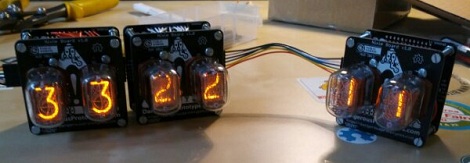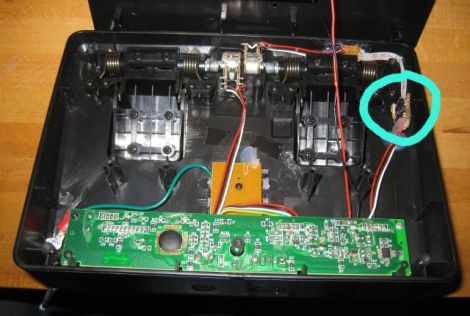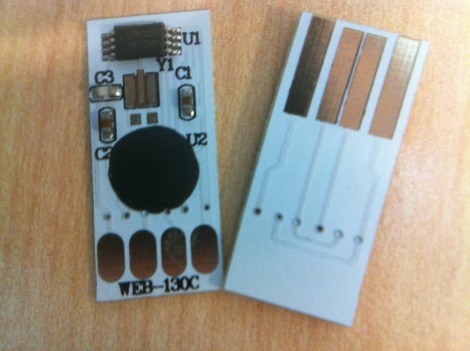
Former Hackaday writer and electronic wizard [Ian] from Dangerous Prototypes made his way to the Maker Faire last weekend. He had a ton of cool stuff to show off, and luckily we were able to grab a few videos.
First up is a chainable Nixie module. [Ian], like all gurus of his caliber, had a box full of Nixie tubes waiting to be used in a project. These tubes never quite made it into their planned projects, mostly due to the difficulty of getting these old Nixies working. To remedy this problem, [Ian] created a chainable Nixie tube module – just hook up a high voltage supply to the board, connect it to the microcontroller of your choice, and you’ve got 2 Nixie tubes for your project.
[Ian] also showed off an ingenious solution to one of every maker’s problems. After designing a few cool boards like the Bus Pirate, Flash Destroyer, and Logic Sniffer, he realized he never made two boards that were the same size. This meant it was nigh impossible to have a standardized set of cases for his (and other maker’s) projects. The result is the Sick of Beige standard for electronics projects.
This standard provides PCB layouts in both square and golden rectangle formats complete with mounting holes, radiused corners, keepout areas, and suggested placement locations for USB ports and SD cards. The idea behind Sick of Beige is to get makers and fabbers using the same board dimensions so a set of standardized cases can be constructed. It’s an awesome idea and something we highly recommend for your next project.
Videos after the break. Continue reading “Checking In With [Ian] From Dangerous Prototypes”
















